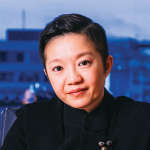Goodwin Procter has confirmed Mark Soundy and Sarah Priestley are joining following their resignation from Shearman & Sterling.
Shearman’s former private equity head Soundy resigned in October after a three year stint. He was hired from Weil, Gotshal & Manges in a bid to establish the firm’s private equity offering in the City along with Priestley. Associate Simon Burrows also moved over from Weil to Shearman as partner at the same time but remains at the firm.
London-based Soundy focuses on UK and international M&A work, and has advised a number of institutional investors, international businesses and senior management teams while corporate tax specialist Priestley focuses on private equity and hedge funds. Soundy’s client base includes APAX Partners, Bridgepoint, GMT Communications and HgCapital/Mercury.
Goodwin Europe office chair David Evans (pictured) said: ‘Mark and Sarah are outstanding, highly experienced lawyers who will be terrific additions to Goodwin as we continue to build out our global private equity platform. Their appointment is an important step in ensuring that we continue to have a best-in-class private equity team that can represent clients across the UK, Europe, Asia and the US.’
Last month it was revealed King & Wood Mallesons’ (KWM) influential head of investment funds and major biller Michael Halford will also join Goodwin, a month after resigning from the troubled firm.
Major billers Ajay Pathak, Patrick Deasy, Ed Hall and Shawn D’Aguiar are also to sign with Goodwin. Part of the firm’s prized funds team, Pathak, Deasy and Hall are worth roughly £8m in billings.
Halford’s exit along with three other influential legacy SJ Berwin partners, Jonathan Pittal, Andrew Wingfield and Rob Day caused the firm to halt and ultimately fail in its plans to recapitalise the business, which is carrying more than £30m in debt.
madeleine.farman@legalease.co.uk
Read more: ‘Can Shearman finally get ahead of the curve after 15 years of diminishing returns?’










